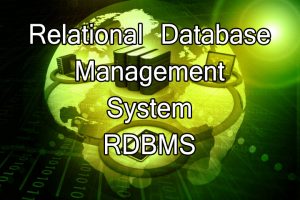
What is Relational Database Management System (RDBMS) ?
The RDBMS (Relational Database Management System) is a system complying to the relational model developed by IBM’s E F Codd. It allows the user to construct, modify and administer a relational database. Most of the databases that exist today are an extension of this age old model. The data is structured in database tables, fields and records.
The stored data is allowed to be manipulated using relational operators in Relational Database Management System. SQL is used as the data query language in this system.This article will give you complete information about Relational Database Management System like its advantages, uses, features, disadvantages and how it is different from DBMS.
Explain Relational Database Management System (RDBMS)
There are quite a few differences between these two systems. Some of them are:
How is it different from a normal DBMS?
- DBMS stores data as files whereas RDBMS stores data in a tabular arrangement.
- RDBMS allows for normalization of data.
- RDBMS maintains a relation between the data stored in its tables. A normal DBMS does not provide any such link. It blankly stores data is its files.
- Structured approach of RDBMS supports a distributed database unlike a normal database management system.
Features of RDBMS
The system caters to a wide variety of applications and quite a few of its stand out features enable its worldwide use. The features include:
- First of all, its number one feature is the ability to store data in tables. The fact that the very storage of data is in a structured form can significantly reduce iteration time.
- Data persists in the form of rows and columns and allows for a facility primary key to define unique identification of rows.
- It creates indexes for quicker data retrieval.
- Allows for various types of data integrity like (i) Entity Integrity; wherein no duplicate rows in a table exist, (ii)Domain Integrity; that enforces valid entries for a given column by filtering the type, the format, or the wide use of values, (iii)Referential Integrity; which disables the deletion of rows that are in use by other records and (iv)User Defined Integrity;providing some specific business rules that do not fall into the above three.
- Also allows for the virtual table creation which provides a safe means to store and secure sensitive content.
- Common column implementation and also multi user accessibility is included in the RDBMS features.
Advantages of RDBMS
The potential of this relational model has been more than justified by its state-of-the-art features. However a brief definition of its advantages also need to be mentioned to provide totality to its usefulness.
- Data is stored only once and hence multiple record changes are not required. Also deletion and modification of data becomes simpler and storage efficiency is very high.
- Complex queries can be carried out using the Structure Query Language. Terms like ‘Insert’, ‘Update’, ‘Delete’, ‘Create’ and ‘Drop’ are keywords in SQL that help in accessing a particular data of choice.
- Better security is offered by the creation of tables. Certain tables can be protected by this system. Users can set access barriers to limit access to the available content. It is very useful in companies where a manager can decide which data is provided to the employees and customers. Thus a customized level of data protection can be enabled.
- Provision for future requirements as new data can easily be added and appended to the existing tables and can be made consistent with the previously available content. This is a feature that no flat file database has.
Disadvantages of RDBMS
Like there are two sides to a coin, RDBMS houses a few drawbacks as well.
- The prime disadvantage of this effective system is its cost of execution. To set up a relational database management system, a special software needs to be purchased. Once it is bought, setting up of data is a tedious task. There will be millions of lines of content to be transferred to the tables. Some cases require the assistance of a programmer and a team of data entry specialists. Care must be taken to ensure secure data does not slip into the wrong hands at the time of data entry.
- Simple text data can be easily added and appended. However, newer forms of data can be confusing. Complex images, numbers, designs are not easy to be categorized into tables and presents a problem.
- Structure limits are another drawback. Certain fields in tables have a character limit.
- Isolated databases can be created if large chunks of information are separated from each other. Connecting such large volumes of data is not easy.
Uses of RDBMS
They find application in disciplines like: Banking,airlines,universities, manufacturing and HR.
Using RDBMS can bring a systematic view to raw data. It is easy to understand and execute and hence enables better decision making as well.
It ensures effective running of an accounting system.Moreover, ticket service and passenger information documentation in airlines, student databases in universities and product details along with consumer demand of these products in industries also comes under the wide usage scope of RDBMS.
So it was all about Relational Database Management System and its advantages, uses, features, disadvantages and how it is different from DBMS.